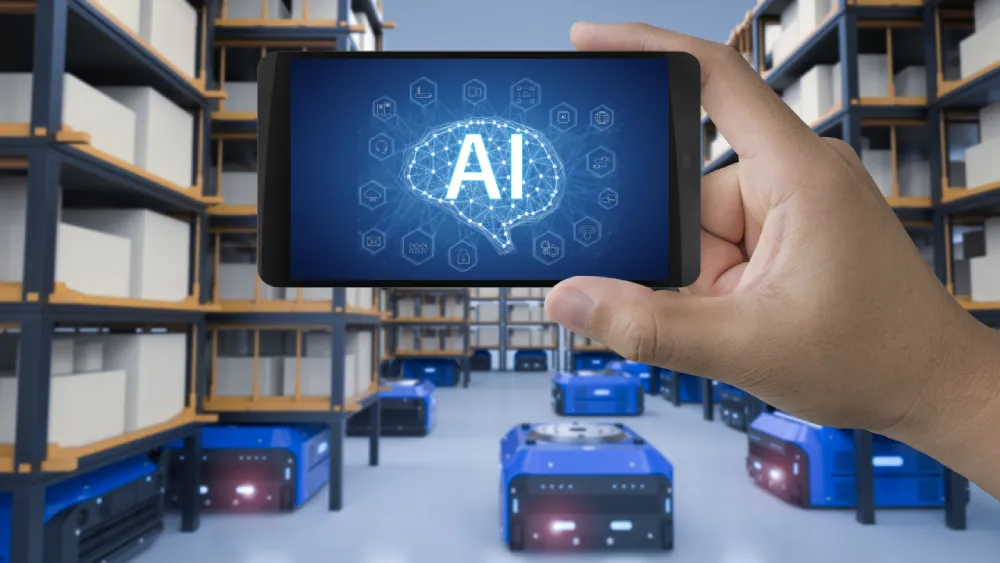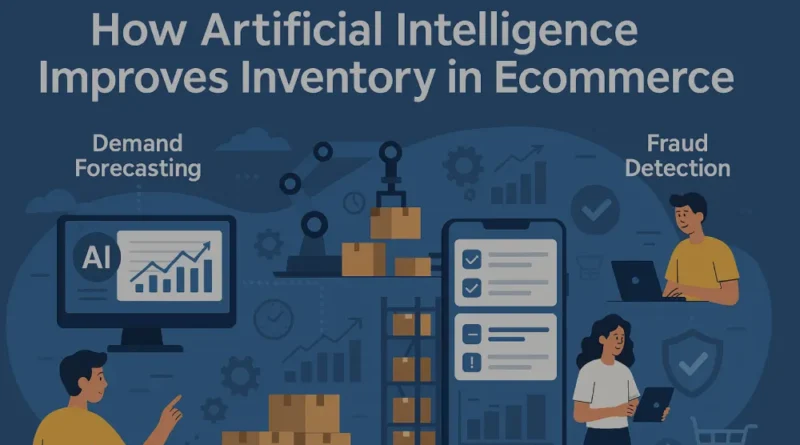How Artificial Intelligence Improves Inventory in Ecommerce
Inventory management is one of the most critical components of success in the e-commerce industry. Managing stock levels, predicting demand, preventing overstocking or stockouts, and ensuring timely deliveries are complex challenges—especially when operating at scale. Artificial Intelligence (AI) is revolutionizing how businesses handle inventory, bringing intelligence, efficiency, and automation to processes that were once time-consuming and error-prone.
1. Smarter Demand Forecasting
Conventional forecasting techniques often overlook crucial indicators like changes in the market or in customer behavior since they mainly depend on historical sales data and human guesses. Through the use of machine learning algorithms that examine vast information, such as previous sales, seasonal trends, promotions, browsing patterns, and even social media activity, artificial intelligence (AI) transforms the game.
E-commerce systems may use artificial intelligence (AI) to forecast which items will be in high demand, when that demand will peak, and in which areas. By doing this, companies can make sure they have the correct items on hand at the right moment, which will increase sales and reduce holding expenses.
2. Real-Time Inventory Tracking
Keeping track of goods by hand is out-of-date and prone to mistakes. AI makes real-time tracking possible by using automatic systems to keep an eye on stock amounts in stores, factories, and supply lines. It uses barcode readers, IoT devices, and RFID tags to send data to centralized tracking systems all the time.
Businesses always know what’s available, what’s getting low, and what needs instant attention because they can see everything in real time. It also helps avoid problems like overselling or shipping delays that can happen when store data is wrong.
3. Automated Replenishment
AI can do more with stuff than just keep track of it. When stock levels drop below a certain level, AI systems can make purchase orders or restock based on what they think customers will want. These systems figure out the best time and amount to reorder by looking at wait times, how reliable the provider is, and current sales trends.
This saves time and lowers the chance of making a mistake. Businesses can keep the right amount of stock on hand and make sure that popular items never run out with automated restocking.

4. Dynamic Distribution and Allocation
Selecting a location for inventory storage is essential in multi-warehouse operations. Based on shipment schedules, delivery preferences, and regional demand projections, AI can automatically assign items to warehouses. For example, the system will make sure that there is enough stock at the closest fulfillment facility if data indicates that a product sells better in a certain city.
Delivery times are shortened, logistical expenses are decreased, and customer satisfaction is raised with this clever distribution strategy.
5. Warehouse Optimization
AI not only makes predicting and restocking goods more efficient, but it also makes warehouse work more efficient. It can figure out which items sell the most and suggest where in the building they should be kept so they are easy to get to.
Some AI systems go even further by finding the best ways for staff to pick items or robots to take, which cuts the time it takes to fill an order by a large amount.
6. Pricing and Inventory Sync
One more good thing about AI is that it helps with changing prices. When there is a lot of stock, the system can offer sales or deals to get rid of it. But if there isn’t enough stock and there is a lot of demand, the AI might raise the price a little to keep profits high and supply equal.
When this level of price information is combined with data on supplies, it makes sales and profit management better.
7. Reduced Waste and Increased Profitability
When you don’t keep track of your inventory well, you may end up with outdated goods, deadstock, or markdowns. AI cuts down on these kinds of costs by better predicting demand, better rotating stock, and preventing businesses from buying too much. Businesses can cut costs, cut down on waste, and make a lot more money by optimizing their product flow.
8. Better Customer Experience
In the end, stocking systems that use AI help the customer. Popular things will always be in stock if inventory planning is done right. People are happier when they can get their orders faster thanks to smart warehouse distribution. Dynamic restocking also lowers the chance that a product won’t be available during busy buying times.
A streamlined system gives the end user a smooth and uniform shopping experience, which encourages trust and return orders.
Conclusion
AI is changing how e-commerce businesses keep track of their goods. AI adds intelligence and flexibility to every step of inventory management, from accurately predicting demand and keeping track of stock in real time to automating restocking and setting prices that change based on demand. When businesses use AI solutions, they not only improve customer happiness and make more money, but they also make their supply chains run more smoothly.
In today’s online market, which is very competitive, using AI to manage goods is no longer a choice; it’s necessary for long-term success and growth.
Disclaimer
The information presented in this blog is derived from publicly available sources for general use, including any cited references. While we strive to mention credible sources whenever possible, Best Website Development Agency in Mumbai does not guarantee the accuracy of the information provided in any way. This article is intended solely for general informational purposes. It should be understood that it does not constitute legal advice and does not aim to serve as such. If any individual(s) make decisions based on the information in this article without verifying the facts, we explicitly reject any liability that may arise as a result. We recommend that readers seek separate guidance regarding any specific information provided here.

